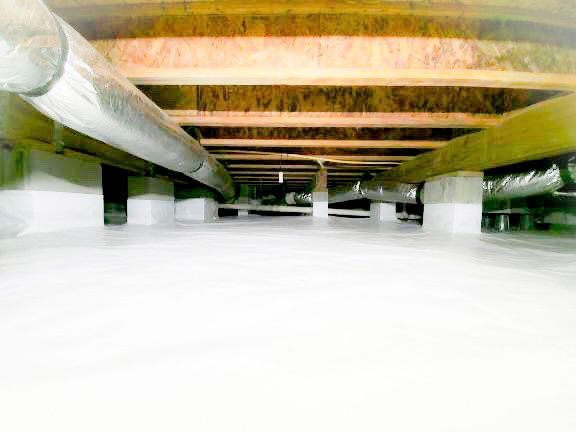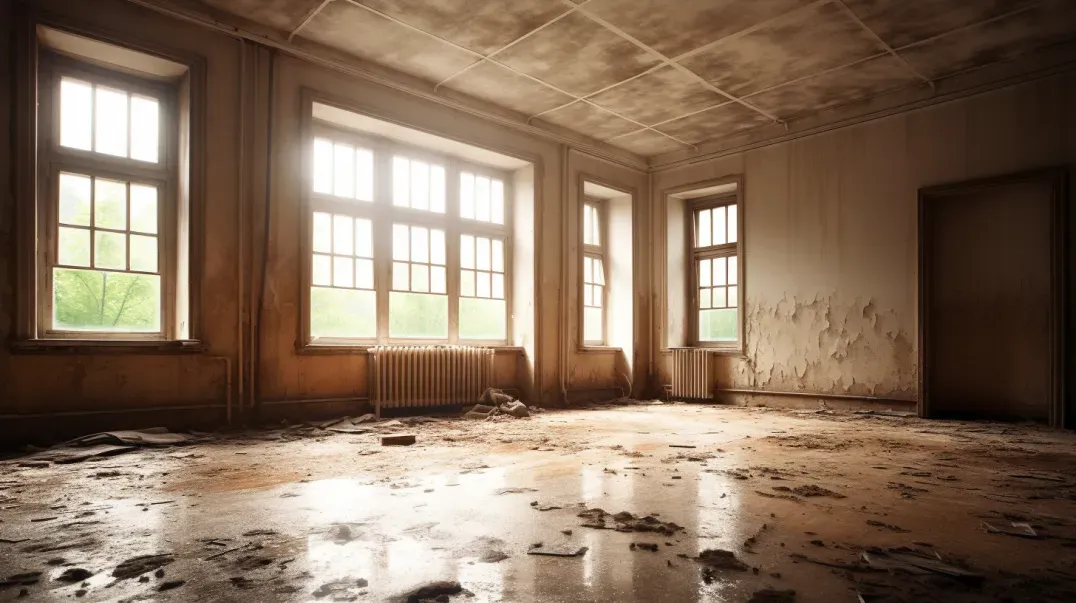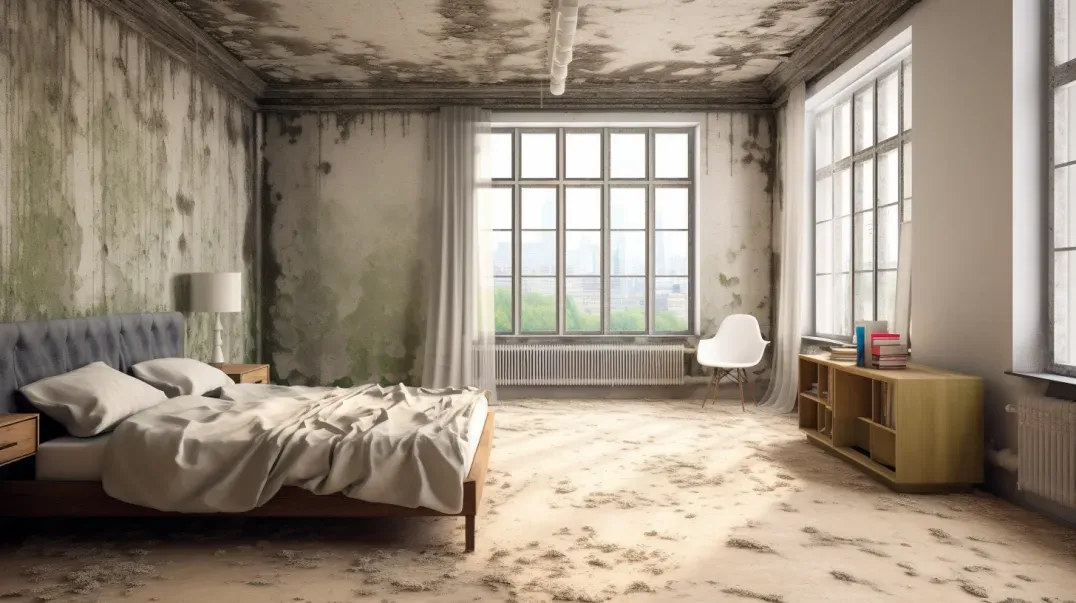When to Call a Mold Expert
Mold – a word that often brings to mind images of unsightly spots and a musty odor. Yet, this common household problem extends far beyond mere aesthetic concerns. In this blog, we delve into the hidden world of mold, a pervasive issue that can lurk in the nooks and crannies of our homes, often unnoticed until it becomes a significant problem. Our journey begins with a comprehensive overview of mold: what it is, how it grows, and why it's more than just a superficial nuisance.
The presence of mold in our living spaces is not just a matter of cleanliness; it's a complex issue with implications for the health and well-being of inhabitants and the structural integrity of buildings. This blog aims to illuminate the often-overlooked dangers of mold and the importance of recognizing its early signs. We will explore the various factors that contribute to mold growth, from humidity and water leaks to poor ventilation, providing a holistic understanding of how these seemingly minor issues can create an ideal breeding ground for mold.
However, identifying the problem is only the first step. The crux of our discussion centers on the critical importance of timely intervention by a mold expert. Mold remediation is not a do-it-yourself task; it requires the expertise and precision of trained professionals. This blog will highlight the reasons why expert intervention is not just advisable but essential. From accurately diagnosing the extent of the problem to employing the right techniques for effective and safe removal, the role of a mold expert is indispensable in ensuring a healthy, mold-free environment.
Join us as we uncover the hidden truths about mold, arming you with the knowledge and understanding necessary to tackle this common yet underestimated household challenge. Whether you're currently facing a mold issue or simply seeking to be prepared, this blog offers valuable insights and practical advice on the importance of timely expert intervention in mold remediation.
Understanding Mold and Its Impacts
Mold is a common yet often misunderstood issue in many households and buildings. This section of our blog aims to demystify mold, providing readers with a clear, comprehensive understanding of what mold is, the conditions under which it thrives, and the various types that exist. Our goal is to equip you with the knowledge necessary to identify and address mold issues effectively.
What is Mold?
Mold is a type of fungus that can be found both indoors and outdoors. It plays a crucial role in nature by breaking down dead organic matter. However, when it grows unchecked within our homes, it becomes a cause for concern. Mold reproduces through tiny spores that float through the air and can start growing on surfaces when they find the right conditions: moisture, warmth, and a food source like wood, paper, or fabric.
There are thousands of mold species, varying in color and form. Some common types found in homes include Aspergillus, Penicillium, and Stachybotrys, often referred to as black mold. Understanding these types can help in identifying and treating mold infestations more effectively.
Health and Structural Risks of Mold
The presence of mold in a home or building poses significant risks, both to the health of the occupants and the structural integrity of the building itself.
Health Risks: Mold exposure can lead to various health issues, particularly for individuals with allergies, asthma, or weakened immune systems. Symptoms of mold exposure can range from nasal stuffiness, throat irritation, coughing or wheezing, to more severe allergic reactions. It's crucial to understand these health risks to take timely action against mold growth in your living spaces.
Structural Damage: Beyond health concerns, mold can cause substantial damage to the structure of buildings. It feeds on organic materials like wood, paper, and carpet, weakening the structural integrity over time. This damage can be costly to repair and poses safety risks if left unaddressed.
In this blog, we will explore these risks in detail, providing insights into how mold can affect your health and your home, and why it's essential to tackle mold issues promptly and effectively.
Signs That Indicate the Need for a Mold Expert
Identifying the presence of mold in your home or building is not always straightforward. While some signs are visible, others might be more subtle. This section of our blog focuses on key indicators that suggest the need for a professional mold expert's intervention. Understanding these signs is crucial for maintaining a healthy living environment and ensuring the structural integrity of your property.
Visible Mold Growth
One of the most apparent signs of a mold problem is visible mold growth. This can appear as patches of varying colors - black, white, green, or even orange - on various surfaces such as walls, ceilings, floors, or furniture. Mold might look like a mere stain or discoloration at first, but it can quickly spread over larger areas.
Visible mold growth often indicates a larger problem, as mold can grow extensively inside wall cavities, under carpets, or in other hidden areas before it becomes apparent. If you notice any visible mold, it's a clear sign that you should contact a mold expert. They can assess the extent of the mold growth, identify the moisture source causing it, and recommend the best course of action for remediation.
Persistent Musty Odors
A persistent musty odor is another telltale sign of a hidden mold problem. This odor is distinctive and indicative of mold growth, even if you can't see any visible signs. Mold can grow in hidden places – behind walls, under floors, or in HVAC systems – making it difficult to locate just by sight.
If you consistently notice a musty smell in certain areas of your home or building, especially in damp or poorly ventilated spaces, it's advisable to consult a mold expert. They can conduct a thorough inspection to find the mold source and determine the extent of the infestation. Ignoring these odors can lead to a worsening of the mold problem and potential health risks for the occupants.
Health Symptoms Suggesting Mold Exposure
Mold exposure in homes and buildings can lead to various health issues, particularly affecting the respiratory system. Recognizing these symptoms is crucial for early intervention and addressing underlying mold problems. This section of the blog aims to inform readers about common health symptoms associated with mold exposure and how these symptoms can be indicative of mold issues in their living environment.
Allergic Reactions and Respiratory Issues
Mold exposure can trigger a range of allergic reactions and respiratory issues, especially in individuals who are sensitive to mold spores. Common health symptoms include:
- Nasal and Sinus Congestion: This can manifest as a stuffy or runny nose, often accompanied by sinus pressure.
- Cough and Throat Irritation: Persistent coughing and sore throat are common reactions to mold exposure.
- Respiratory Problems: Difficulty breathing, wheezing, or shortness of breath can occur, particularly in those with asthma or chronic lung diseases.
- Skin and Eye Irritation: Mold exposure can cause itchy, red, or watery eyes, as well as skin irritation or rashes.
Understanding these symptoms is important for individuals who may be experiencing unexplained allergic reactions or respiratory issues, as they could be related to mold exposure in their environment.
When Symptoms Worsen at Home
If you or your family members notice that these symptoms worsen while at home and improve when away, this could be a strong indicator of mold presence in your living space. The correlation between the location and the intensity of symptoms is a key factor in identifying mold-related health issues.
- Increased Symptoms Indoors: Pay attention to whether the symptoms intensify in certain areas of your home, such as basements, bathrooms, or rooms with poor ventilation.
- Relief Outside the Home: Notice if there is a significant reduction in symptoms when spending time outside the home, indicating that indoor environmental factors, like mold, might be the cause.
This pattern of symptoms can be a critical sign that your home environment needs to be evaluated for mold. In such cases, consulting with healthcare professionals and mold experts can provide guidance on addressing both the health concerns and the underlying mold issue.
Situations That Warrant Professional Mold Inspection
Mold can be a hidden problem, often undetected until it becomes a major issue. Certain situations, however, are more prone to lead to mold growth and thus call for a professional mold inspection. This part of the blog aims to educate readers on specific scenarios where seeking an expert's assessment is not just advisable but necessary for health and safety, as well as for financial and legal reasons.
After Water Damage or Flooding
One of the most critical times to conduct a professional mold inspection is after an incident of water damage or flooding. Water intrusions, whether from natural disasters, pipe bursts, or leaks, create an ideal environment for mold to thrive. Here's why an expert inspection is essential in such situations:
- Rapid Mold Growth: Mold can begin to grow within 24-48 hours in damp conditions. Early detection and remediation are key to preventing widespread mold infestation.
- Hidden Moisture: Professionals can identify hidden moisture areas that are not immediately apparent but can harbor mold growth.
- Health and Safety: Addressing mold promptly after water damage is crucial to prevent potential health risks associated with mold exposure.
A professional mold inspection after any significant water incident ensures that any potential mold growth is identified and addressed promptly, safeguarding the property and its occupants.
When Buying or Selling a Home
Mold inspections are increasingly becoming a critical part of real estate transactions. Whether you're buying or selling a home, understanding the role of mold inspection is important:
- For Buyers: A mold inspection can reveal hidden mold issues that might not be apparent during a standard home inspection. This is crucial for making an informed decision and can also be a negotiating point in the purchase.
- For Sellers: Conducting a mold inspection before listing a property can identify any issues that need to be addressed, potentially avoiding complications during the sale process.
- Legal and Financial Implications: Undisclosed mold problems can lead to legal disputes post-sale. For both buyers and sellers, knowing the mold status of a property can prevent future financial losses and legal issues.
In real estate transactions, a professional mold inspection provides peace of mind and transparency, ensuring that both parties are aware of the property's condition regarding mold.
Limitations of DIY Mold Testing and Remediation
While DIY approaches can be tempting for addressing household issues, mold testing and remediation are areas where professional expertise is crucial. This section of our blog aims to shed light on the limitations and potential risks associated with DIY mold testing and removal, emphasizing why professional intervention is often necessary for effective and safe mold management.
Challenges of Self-Testing for Mold
DIY mold testing kits are readily available in the market, but they come with several limitations and potential inaccuracies:
- Limited Scope: Many DIY kits only test for the presence of mold spores in the air at a specific time, not accounting for variations or the actual source of mold growth.
- Potential for Inaccuracy: These kits may not be as sensitive as professional testing equipment, leading to false negatives or an underestimation of the mold problem.
- Lack of Expert Analysis: Professional mold inspectors can interpret results in the context of the building's specific conditions, something DIY kits cannot provide.
Relying solely on DIY testing can lead to misdiagnoses of the mold situation, potentially allowing unseen problems to worsen.
Risks of DIY Mold Removal
Attempting to remove mold by oneself can be ineffective and potentially hazardous for several reasons:
- Health Risks: Disturbing mold colonies can release a large number of spores into the air, posing health risks, especially without proper safety gear and containment measures.
- Inadequate Removal: DIY methods might clean surface mold but often fail to address the root cause, leading to recurring mold issues.
- Potential for Property Damage: Improper mold removal techniques can damage the property, such as using excessive water or harsh chemicals on surfaces not designed to withstand them.
DIY mold removal can exacerbate the problem and pose health risks to the individuals involved. Professional mold remediation ensures safe, effective, and thorough removal, addressing both visible mold and its underlying causes.
FAQs
Contact Lowcountry Crawlspaces Today!
Lowcountry Crawlspaces will do everything we can to ensure your experience with us is excellent.
Request A FREE Estimate
CHECKOUT RECENT POST



Schedule Your FREE Crawl Space Evaluation Today
There Is No Crawl Space Job We Can’t Fix!




